For the 2025 school year, there is 1 public middle school serving 490 students in Hawthorne Public School District. This district's average middle testing ranking is 5/10, which is in the bottom 50% of public middle schools in New Jersey.
Public Middle School in Hawthorne Public School District have an average math proficiency score of 24% (versus the New Jersey public middle school average of 32%), and reading proficiency score of 55% (versus the 48% statewide average).
Minority enrollment is 57% of the student body (majority Hispanic), which is less than the New Jersey public middle school average of 68% (majority Hispanic).
Overview
This School District
This State (NJ)
# Schools
5 Schools
835 Schools
# Students
2,177 Students
458,046 Students
# Teachers
205 Teachers
39,885 Teachers
Student : Teacher Ratio
11:1
11:1
District Rank
Hawthorne Public School District, which is ranked within the bottom 50% of all 646 school districts in New Jersey (based off of combined math and reading proficiency testing data) for the 2021-2022 school year.
The school district's graduation rate of 85-89% has decreased from 90-94% over five school years.
Overall District Rank
#348 out of 650 school districts
(Bottom 50%)
(Bottom 50%)

Math Test Scores (% Proficient)
30%
36%
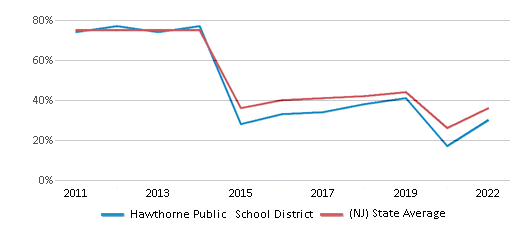
Reading/Language Arts Test Scores (% Proficient)
53%
49%
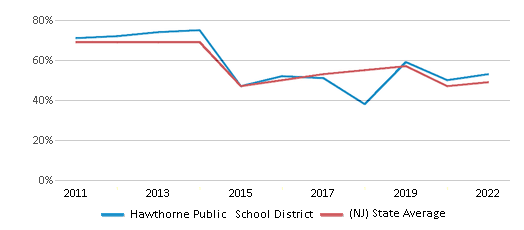
Science Test Scores (% Proficient)
16%
23%
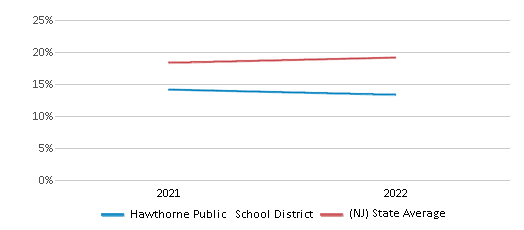
Graduation Rate
85-89%
85%
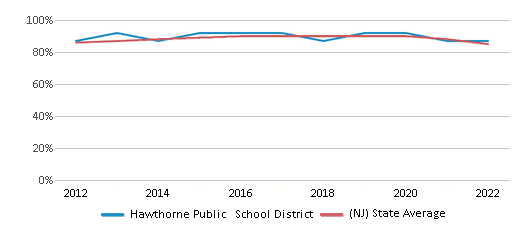
Students by Ethnicity:
Diversity Score
0.59
0.72
# American Indian Students
2 Students
913 Students
% American Indian Students
n/a
n/a
# Asian Students
58 Students
39,872 Students
% Asian Students
3%
9%
# Hispanic Students
1,040 Students
173,877 Students
% Hispanic Students
48%
38%
# Black Students
81 Students
84,536 Students
% Black Students
4%
18%
# White Students
943 Students
145,711 Students
% White Students
43%
32%
# Hawaiian Students
2 Students
858 Students
% Hawaiian Students
n/a
n/a
# Two or more races Students
50 Students
12,134 Students
% of Two or more races Students
2%
3%
Students by Grade:
# Students in PK Grade:
51
12,448
# Students in K Grade:
151
19,022
# Students in 1st Grade:
180
19,268
# Students in 2nd Grade:
164
19,849
# Students in 3rd Grade:
170
20,625
# Students in 4th Grade:
167
22,766
# Students in 5th Grade:
192
30,973
# Students in 6th Grade:
161
79,058
# Students in 7th Grade:
158
100,830
# Students in 8th Grade:
171
101,895
# Students in 9th Grade:
147
8,812
# Students in 10th Grade:
163
7,480
# Students in 11th Grade:
139
7,369
# Students in 12th Grade:
163
7,529
# Ungraded Students:
-
122
District Revenue and Spending
The revenue/student of $26,115 in this school district is less than the state median of $26,931. The school district revenue/student has stayed relatively flat over four school years.
The school district's spending/student of $26,852 is higher than the state median of $25,828. The school district spending/student has stayed relatively flat over four school years.
Total Revenue
$57 MM
$36,642 MM
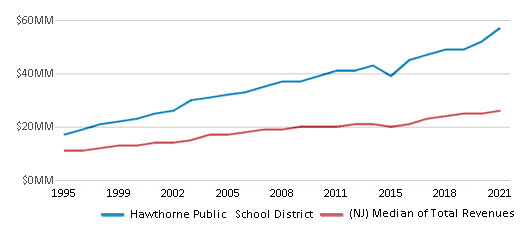
Spending
$59 MM
$35,142 MM
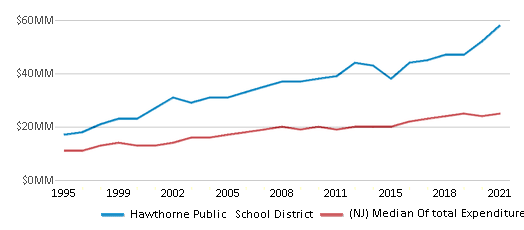
Revenue / Student
$26,115
$26,931

Spending / Student
$26,852
$25,828

Best Hawthorne Public School District Public Middle Schools (2025)
School
(Math and Reading Proficiency)
(Math and Reading Proficiency)
Location
Grades
Students
Rank: #11.
Lincoln Middle School
(Math: 24% | Reading: 55%)
Rank:
Rank:
5/
Bottom 50%10
230 Hawthorne Avenue
Hawthorne, NJ 07506
(973) 423-6460
Hawthorne, NJ 07506
(973) 423-6460
Grades: 6-8
| 490 students
Recent Articles

Year-Round Or Traditional Schedule?
Which is more appropriate for your child? A year-round attendance schedule or traditional schedule? We look at the pros and cons.

Why You Should Encourage Your Child to Join a Sports Team
Participating in team sports has a great many benefits for children, there is no doubt. In this article you will learn what those benefits are.

White Students are Now the Minority in U.S. Public Schools
Increasing birth rates among immigrant families from Asia and Central and South America, combined with lower birth rates among white families, means that for the first time in history, public school students in the United States are majority-minority. This shift in demographics poses difficulties for schools as they work to accommodate children of varying language abilities and socio-economic backgrounds.





